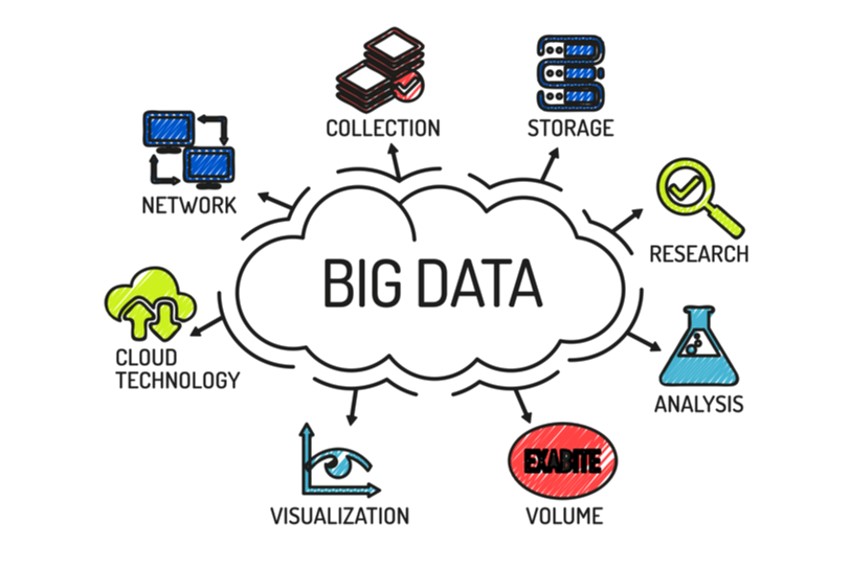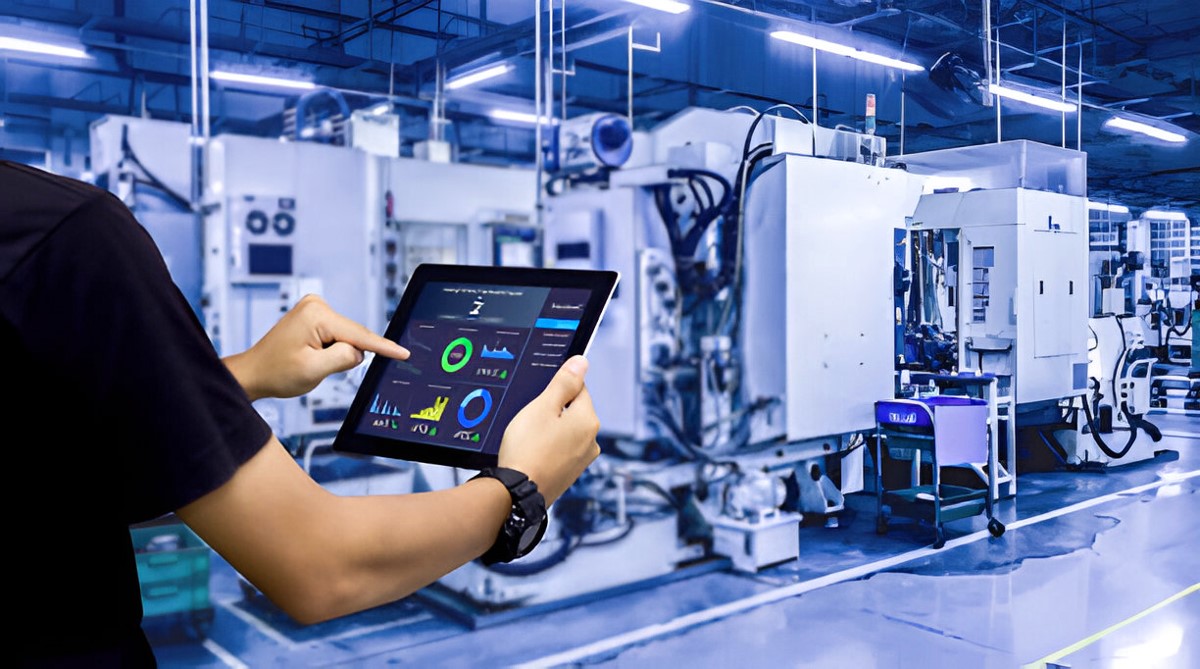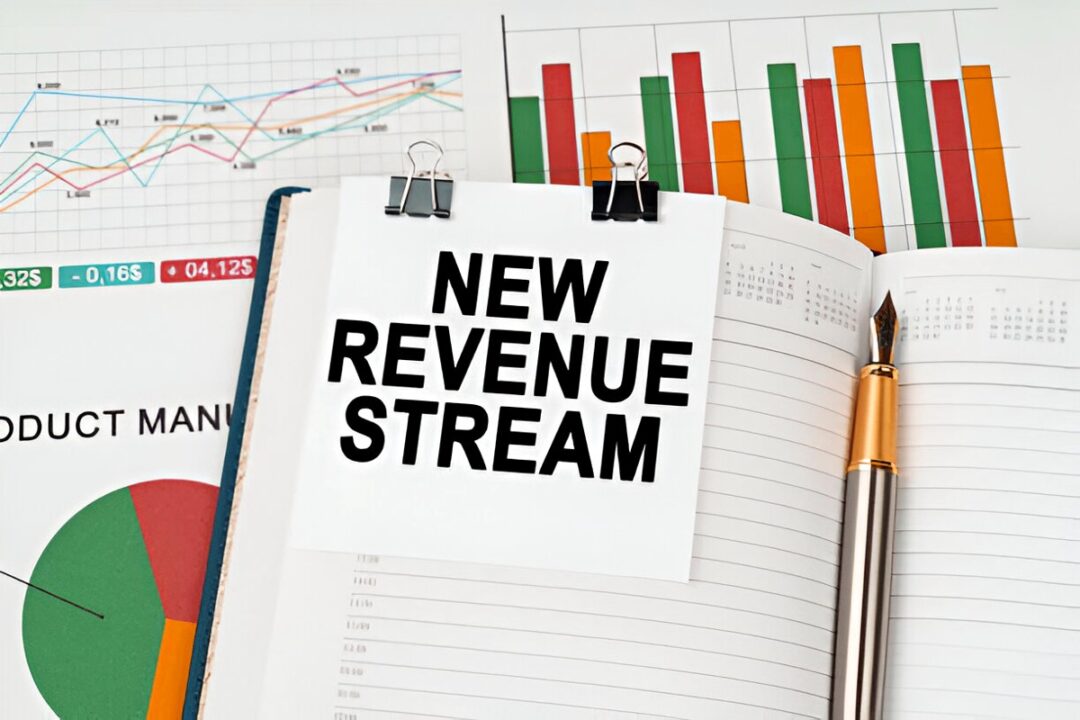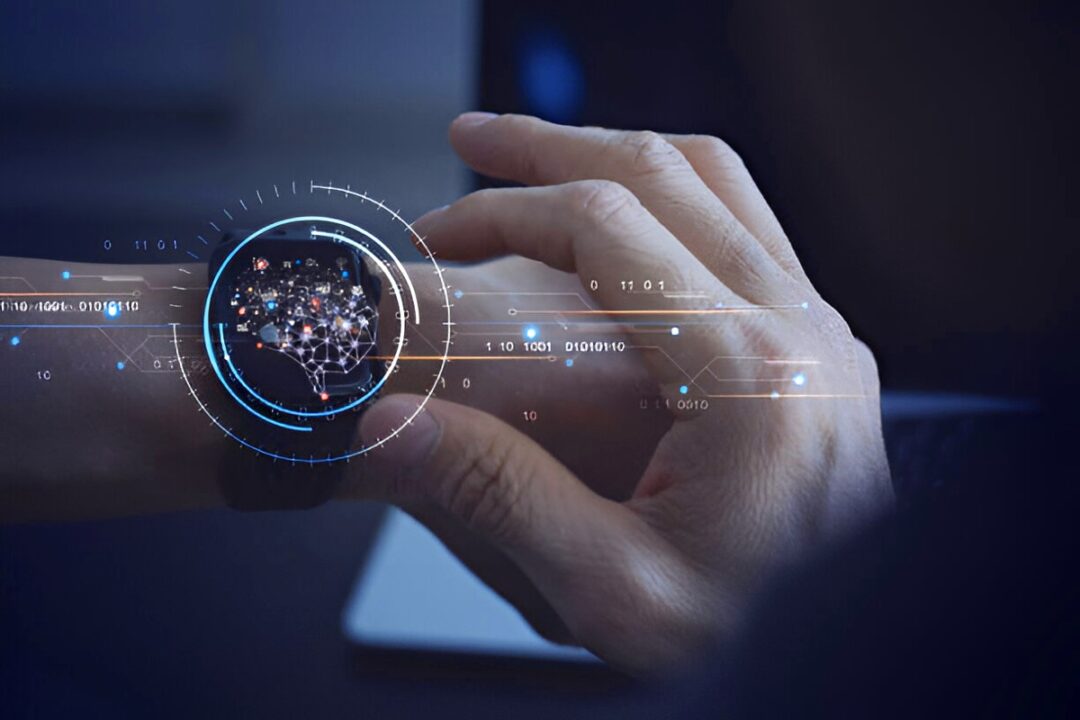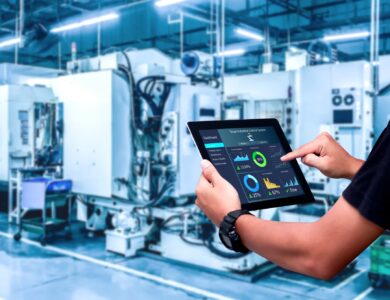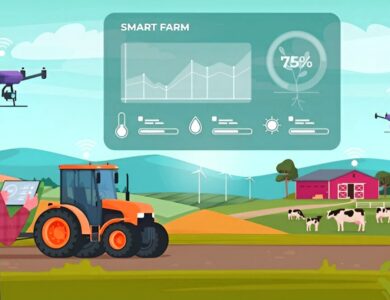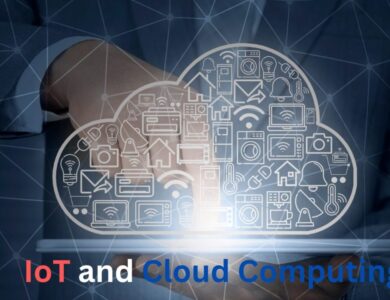What is IoT? (Internet of Things) Explaind
The Internet of Things (IoT) is a network of physical items that are linked together and can collect, send, and process data over the internet.
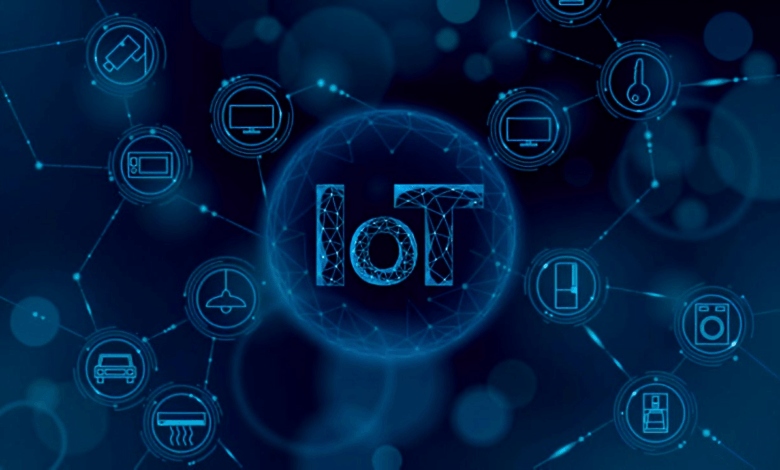
When people talk about new technology and ideas, they often use the word “Internet of Things” (IoT). Still, the Internet of Things (IoT) is hard to understand. The Internet of Things (IoT) is a network of physical items that are linked together and can collect, send, and process data over the internet. In an ideal world, everyday things like your car, thermostat, and refrigerator could talk to each other to make your life easier and better. This linked system changes how we interact with the world and makes daily life easier and more useful.
The Importance of the Internet of Things (IoT) and Its Transformative Power
Humans, businesses, and technology are all evolving because of the Internet of Things (IoT). With more and more gadgets connecting to the internet, it’s clear that IoT is extremely important. It’s changing how we use technology and talk to each other, from smart homes to commercial uses. This article talks about the meaning of industrial IoT, the technologies that make it possible, the businesses it helps, how it transforming the world, and its uses and deployment methods.
Why is the Internet of Things (IoT) so important?
The importance of IoT stems from its ability to connect everyday objects to the internet, allowing for seamless communication and data exchange. Here are some key reasons why IoT is essential:
1. Enhanced Efficiency
IoT devices can automate tasks so that people don’t have to do them. Smart heaters, for instance, change the temperature and humidity based on what you want, which saves energy and money. This higher level of efficiency helps both people and businesses that want to run more efficiently. More than that, automation can speed up reaction times in many fields, such as healthcare, logistics, and manufacturing, which helps businesses grow efficiently.
2. Data-Driven Decision Making
A huge amount of data is generated and analyzed in real time by IoT. This information can help businesses make smart choices that will make their strategies and processes better. For example, retailers can use IoT data to look at how customers behave, which helps them adjust their marketing and inventory management. With real-time data, businesses can quickly change their strategies based on what customers want or how the market is changing, which gives them an edge in markets that are always changing.
3. Improved quality of life.
IoT technology makes many parts of our daily lives better. Smart home devices make life easier by letting you handle things like your lights and security system from your phone. Wearable tech tracks health data, encouraging fitness and preventive care. People have a better standard of life because of these advances. In addition, IoT-enabled public services like smart traffic and garbage management systems make city life more efficient, which is good for everyone in the community.
4. Sustainability and Resource Conservation
IoT is very important for supporting sustainability because it helps make the best use of resources. For example, smart irrigation systems in farming check how wet the earth is and change how much water is applied based on that information, which cuts down on waste. This use of resources more wisely is good for the earth and fights climate change. IoT applications in energy management, like smart grids, also make it easier to watch energy use and distribute it more efficiently, which further supports efforts to be more environmentally friendly.
What Technologies Have Made Internet of Things Possible?
Several key technologies have converged to make IoT a reality. These advancements enable devices to connect, communicate, and process data effectively.
1. Wireless Communication
Wi-Fi, Bluetooth, and cellular networks are all examples of wireless communication technologies that let devices link to the internet without using wires. This connection is very important for IoT devices to work smoothly. IoT devices will benefit from faster speeds and lower latency as 5G technology spreads. This will allow real-time data transmission and improve the powers of applications like self-driving cars and remote surgeries.
2. Cloud Computing
Cloud computing gives us the tools we need to store and handle the huge amounts of data that IoT devices produce. Businesses can look at info in real time with the cloud, which helps them make quick decisions and use their resources well. Because cloud services are scalable, businesses can grow their IoT projects without having to spend a lot of money on building new equipment on-site.
3. Big Data Analytics
To get useful information from IoT systems, you need to be able to look at a lot of data. Businesses can use big data analytics tools to find patterns and trends, which lets them make decisions based on data. These insights can help make processes more efficient, make the customer experience better, and find new business possibilities.
4. Artificial Intelligence (AI)
AI technologies make IoT devices smarter and more useful by letting them learn and change over time. For example, AI systems can look at data from smart home devices to guess what a user will want, which makes the experience more tailored to their needs. Also, analytics driven by AI can find strange things in industrial equipment, which lets maintenance happen before they break down and keeps downtime to a minimum.
5. Edge Computing
Using edge computing, handling data is done closer to where it is created. Which makes reaction times faster and lowers latency. This is especially important for real-time analysis applications like smart factories and self-driving cars. Corporations can make faster decisions and lower internet costs by processing data at the edge.
What is Industrial IoT?
Industrial IoT (IIoT) refers to the application of IoT technology in industrial settings. It involves connecting machinery, sensors, and devices within manufacturing, supply chain, and logistics environments to improve operational efficiency and productivity. Here’s how IIoT is making a difference:
Read More: Future Trends in Palletizing Technology: A Comprehensive Guide
1. Predictive Maintenance
By keeping an eye on equipment in real time, IIoT makes predictive repair possible. Sensors keep an eye on how well machines are working, which helps businesses spot problems before they become major problems. This proactive method cuts down on maintenance costs and downtime. Businesses can use machine learning algorithms to figure out when equipment is likely to break down based on past data. This lets them schedule repairs for the right time.
2. Supply Chain Optimization
Using IIoT, businesses can see their supply lines in real time. This facilitates better control of inventory, shorter lead times, and better logistics. Sensors can, for example, keep track of where things are while they’re being shipped, making sure they get delivered on time. Additionally, Internet of Things (IoT) apps can improve warehouse work by automatically counting inventory and keeping track of real-time stock amounts.
3. Enhanced safety and compliance.
IoT devices can keep an eye on things like temperature, humidity, and air quality in the office. This helps make the workplace better for workers and makes sure that safety rules are followed. Wearable IoT devices can also keep track of workers’ movements and send them alerts when there are dangerous situations, which makes the workplace safer.
4. Improved productivity
IIoT boosts efficiency by automating tasks and giving real-time information. Employees can focus on more important jobs while machines do the boring ones, which makes the whole process more efficient. For example, automatic quality control systems can find flaws in the way things are made, so they can be fixed right away and waste is kept to a minimum.
Unlock business value with IoT.
Businesses can unlock significant value through IoT by leveraging its capabilities to enhance operations, improve customer experiences, and drive innovation. Here are some ways to realize business value through IoT:
1. Cost Savings
By making better use of resources and improving processes, IoT solutions can help businesses save a lot of money. For example, energy management systems can lower electricity costs by keeping an eye on and changing how much energy is used. IoT apps can help with logistics by planning routes more efficiently, saving money on fuel, and speeding up delivery times.
2. New revenue streams
IoT gives companies new ways to make money by letting them offer new services. For example, businesses can offer help and updates for smart home devices through subscription-based models. IoT devices can also make money by selling information they get from their data to other people, which is an extra way to make money.
3. Customer insights
IoT lets companies find useful things about their customers’ likes and dislikes and how they act. This data can help with product growth and marketing plans, which will make customers happier and more loyal. For example, stores can look at how customers move around inside to find the best ways to set up their shelves and display their goods.
4. Competitive Advantage
Businesses can set themselves apart from competitors by using IoT options. When businesses use IoT well, they can quickly adapt to changes in the market, making their operations more flexible and quick to act. This ability to change is very important in markets that move quickly and where customers’ needs are always changing.
What are IoT applications?
The applications of IoT are vast and varied, impacting nearly every sector. Here are some notable IoT applications:
1. Smart Homes
With IoT technology in smart homes, people can handle their appliances, lighting, and security systems from afar. Smart speakers and heaters are devices that make life easier and use less energy. In addition, these gadgets can learn what the user likes and set up automatic habits that make things safer and more comfortable.
2. Wearable Devices
Wearable IoT devices, like smartwatches and fitness trackers, keep an eye on things like your heart rate and how active you are. They give people information about their health and urge them to live healthier lives. A lot of smart tech can also let users know about possible health problems, which helps doctors help people faster.
3. Smart Cities
IoT applications in smart cities make life better in towns by making it easier to get around, use energy, and get rid of trash. For example, smart traffic lights change based on real-time traffic conditions, which makes traffic flow more smoothly. Smart waste management systems also use sensor data to find the best pickup routes and schedules, which helps make better use of resources.
4. Healthcare monitoring
Healthcare IoT devices allow for remote tracking of patients, which lets doctors keep an eye on their vital signs and health conditions at all times. Better care for patients and quick action are the results. IoT can also help with telemedicine, which lets patients talk to doctors without having to go to a special center.
5. Agriculture
In agriculture, IoT solutions help farmers monitor soil conditions, crop health, and weather patterns. Sensors provide real-time data, enabling precision farming techniques that optimize resource use and enhance yields. IoT-equipped drones can also monitor and spray crops, thereby enhancing operational efficiency.
How can we deploy IoT applications?
Depending on the use case and industry requirements, there are various ways to deploy IoT applications. Here are some common deployment methods:
1. Cloud-Based Solutions
Many IoT applications rely on cloud computing for data storage and processing. The cloud connects to devices to transmit data, analyzes it, and uses it to drive insights and actions. Cloud-based solutions offer scalability and flexibility, allowing businesses to adapt to changing needs.
2. Edge Computing Solutions
IoT applications that demand real-time processing and low latency are increasingly using edge computing. This deployment model processes data locally on the device or a nearby server, thereby minimizing the need to transmit large volumes of data to the cloud. This is particularly beneficial for applications like autonomous vehicles and industrial automation.
3. Hybrid Solutions
Many organizations adopt a hybrid approach, combining cloud and edge computing to optimize performance. For instance, organizations may process critical data at the edge for immediate decision-making, and send less time-sensitive data to the cloud for long-term storage and analysis.
4. Public and Private Networks
IoT devices can connect to public networks, such as cellular or Wi-Fi, or private networks, like local area networks (LAN). The choice of network depends on the specific requirements of the application, including data security, coverage, and reliability. Industrial settings, where security and reliability are paramount, may use private networks.
What Industries Can Benefit from Internet of Things ?
IoT technology has applications across various industries, each reaping unique benefits. Here are some industries that can significantly benefit from IoT:
1. Manufacturing
In manufacturing, IoT enhances operational efficiency, predictive maintenance, and quality control. Smart factories equipped with connected machines can monitor production processes in real time, allowing rapid adjustments and minimizing waste.
2. Healthcare
IoT is revolutionizing healthcare by enabling remote monitoring and telemedicine. Healthcare providers can track patients’ health data in real time, improving outcomes and reducing hospital visits. Additionally, IoT devices can enhance drug management and ensure compliance with treatment protocols.
3. Transportation and logistics
IoT applications in transportation optimize fleet management, route planning, and asset tracking. Connected vehicles can communicate with each other and traffic management systems to reduce congestion and enhance safety. Logistics companies can monitor shipments in real time, ensuring timely deliveries and efficient operations.
4. Agriculture
IoT technologies in agriculture facilitate precision farming, enabling farmers to monitor crops and soil conditions. This leads to better resource management and increased yields. IoT applications can also assist in livestock monitoring by improving animal health and productivity.
5. Retail
Retailers benefit from IoT through enhanced customer experiences and inventory management. Connected devices provide insights into customer behavior, allowing for targeted marketing strategies. Additionally, IoT solutions streamline inventory management, reducing stockouts and excess inventory.
How is IoT changing the world?
The Internet of Things is profoundly changing our world in several ways:
1. Creating Smarter Environments
IoT technology is leading to the development of smarter cities and homes. Smart infrastructure enhances urban living, making cities more efficient and sustainable. Smart homes provide convenience and energy savings, improving residents’ quality of life.
2. Driving Innovation
IoT encourages new ideas by making it possible for new services and business models. Companies can use IoT data to give customers more unique experiences, which makes them more loyal and interested. Being able to look at data in real time makes it possible to keep improving and optimizing things.
3. Empowering individuals
IoT empowers individuals by providing them with control over their environments and access to valuable data. Wearable devices promote health awareness, allowing users to monitor their fitness and well-being. Additionally, smart home technologies enhance convenience and security.
4. Contributing to sustainability.
Internet of Things plays a significant role in promoting sustainability by optimizing resource use and reducing waste. From smart agriculture to energy-efficient buildings, IoT solutions contribute to environmental conservation efforts, helping address global challenges like climate change.
5. Transforming Industries
IoT is transforming industries by enhancing operational efficiency, reducing costs, and improving customer experiences. Organizations that adopt IoT solutions can adapt to market changes quickly, creating a more resilient and agile business environment.
Conclusion
The IoTis more than just a technological advancement; it is a catalyst for change that is reshaping our world. Its importance lies in its ability to enhance efficiency, enable data-driven decision-making, and improve the quality of life for individuals and organizations alike. As we continue to develop and implement IoT solutions across industries, the potential for innovation and positive impact on society is limitless.
